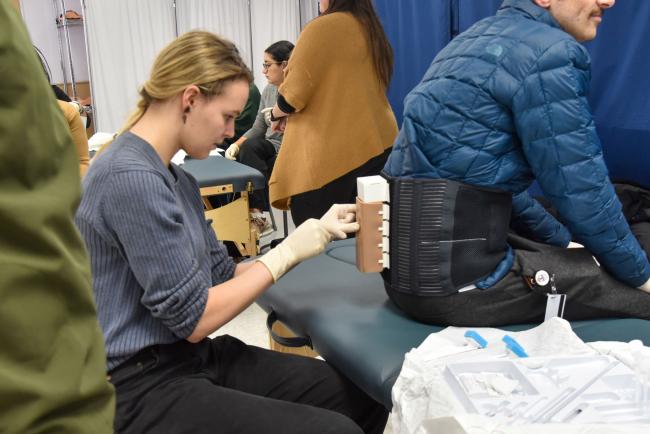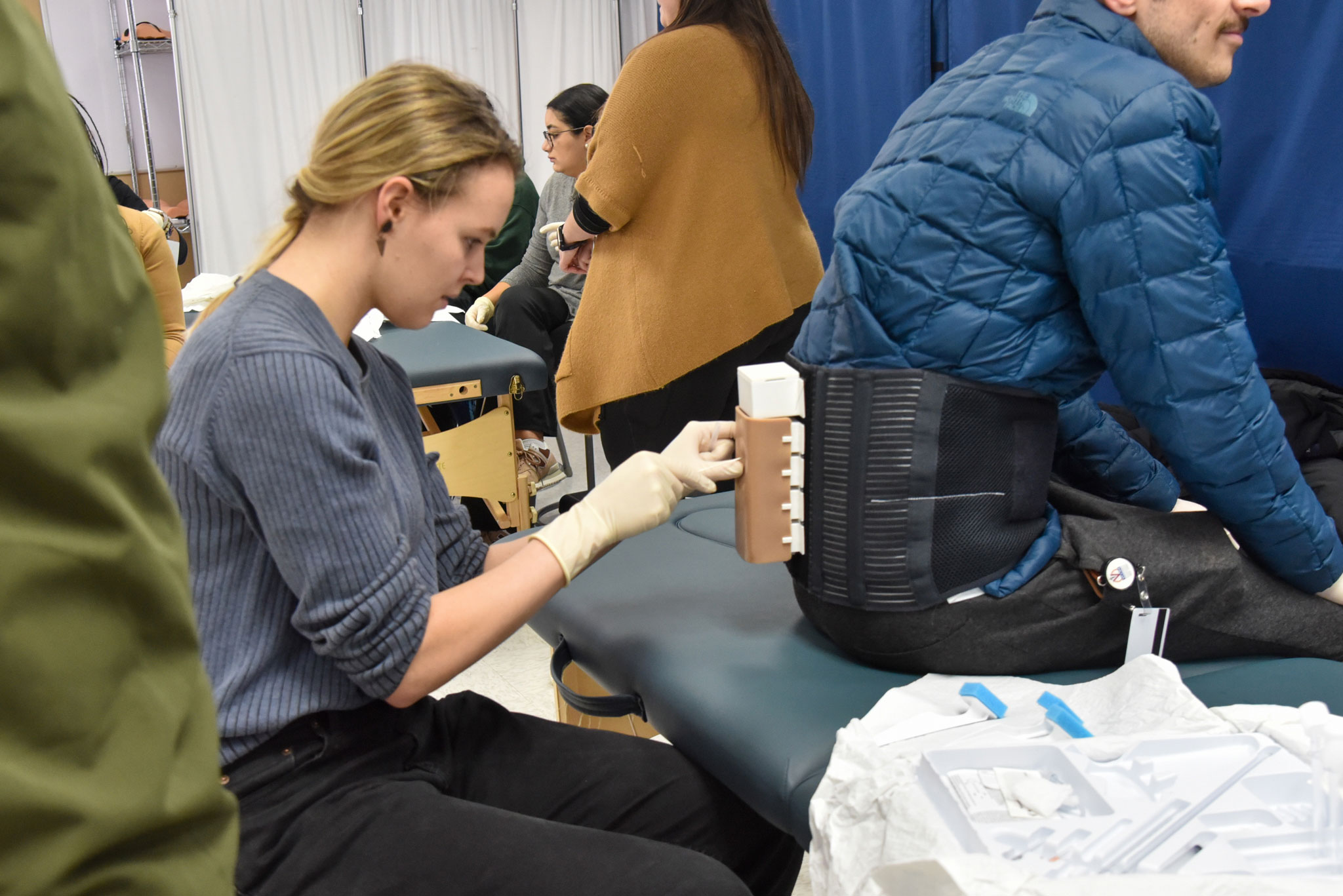
Step inside one of VCOM’s Simulation and Technology Centers, and you’ll find some of the most dynamic spaces on all four campuses. Here, classrooms transform into high-energy, hands-on training labs where students practice life-saving skills, engage with standardized patients, and respond to high-fidelity manikin-based simulations, all under the guidance of experienced physician educators.
These centers aren’t just about mastering medical procedures—they’re about shaping future physicians who embody humanism, professionalism, and sound clinical judgment.
Simulation-based training has emerged as one of the most transformative developments in modern medical education, giving students the opportunity to learn through experience in a safe, controlled setting. VCOM’s Sim Centers are at the forefront of this movement, continually expanding hands-on opportunities for students to refine their technical and decision-making skills before they ever step into a hospital.
Through the use of high-fidelity manikins, standardized patients, and case-based scenarios, students gain confidence and competence while receiving real-time feedback. This immersive learning model enhances skill acquisition, reduces errors, and allows repeated practice without risk to actual patients, making simulation an indispensable tool in medical education.
Of course, innovation doesn’t come without challenges. Cost, equipment maintenance, and the need for skilled instructors are constant considerations. Yet, VCOM’s Simulation Centers continue to thrive by meeting these challenges head-on through creative, homegrown solutions.
Since their beginnings in 2003 with a single simulation room on the Virginia campus, the centers have expanded to include fully equipped facilities at each of VCOM’s four campuses. Each site houses multipurpose simulation rooms, clinical exam rooms, and advanced technology designed to mirror real-world medical environments. The centers also serve as training partners for outside institutions and healthcare organizations seeking innovative, high-quality educational experiences.
What truly sets VCOM’s Sim Centers apart, however, is the ingenuity of the people behind them. Faculty, staff, and students collaborate to design and build their own training tools, which are tailored to the specific needs of the curriculum and are often more affordable than commercial models.
One notable example is the in-house development of synthetic organs, multicultural skin materials, and anatomical parts. At the Virginia campus, student interns tackled the high cost and fragility of commercial airway trainers by designing and 3D-printing durable, low-cost laryngoscopes. These custom creations not only save money but also serve other departments, such as anatomy, which can request specialty models to enhance their own programs.
Another groundbreaking innovation is VCOM’s wearable trainer technology. Beginning with a lumbar injection trainer, the team has also developed a prototype for a wearable knee model that allows students to perform sutures, injections, and manipulations directly on standardized patients or peers. Made from soft, flexible materials that replicate the feel of human tissue, these wearable models bring realism and patient communication to life, bridging the gap between simulation and real-world practice.
The cost savings are just as impressive as the educational value. While commercial knee models can cost more than $4,000 and have limited use, VCOM’s 3D-printed versions are a fraction of the price and feature modular, replaceable parts. The centers also produce their own synthetic skin squares for suturing and injection training, enabling unlimited, low-risk practice for every student.
Beyond these custom innovations, each center features advanced, high-fidelity simulation technology. Manikins that breathe, blink, bleed, and respond to treatment allow students to manage conditions ranging from cardiac arrest and trauma to childbirth and stroke.
The simulated hospital and exam rooms are designed to mirror actual clinical environments and are fully equipped with cameras and microphones to assess student performance. After each exercise, students participate in structured debriefings with faculty, supported by VCOM’s proprietary Via Voice Recognition Technology, which evaluates the accuracy of medical terminology and communication.
At its core, VCOM’s Simulation and Technology Centers put into practice what we know about learning: Students learn best by doing. Within these centers, mistakes become lessons, and every challenge is an opportunity to grow.
VCOM-Virginia Sim Center intern Brooke Morris ’28 says she treasures her time in the center, noting how valuable the experience has been in preparing her for real-world clinical settings.
In the spirit of osteopathic medicine and VCOM’s commitment to compassionate, patient-centered care, the simulation centers affirm the vital role of simulation-based training in preparing the next generation of healthcare professionals.
At its core, VCOM’s Simulation and Technology Centers put into practice what we know about learning: Students learn best by doing. Within these centers, mistakes become lessons, and every challenge is an opportunity to grow.
VCOM-Virginia Sim Center intern Brooke Morris ’28 says she treasures her time in the center, noting how valuable the experience has been in preparing her for real-world clinical settings.









